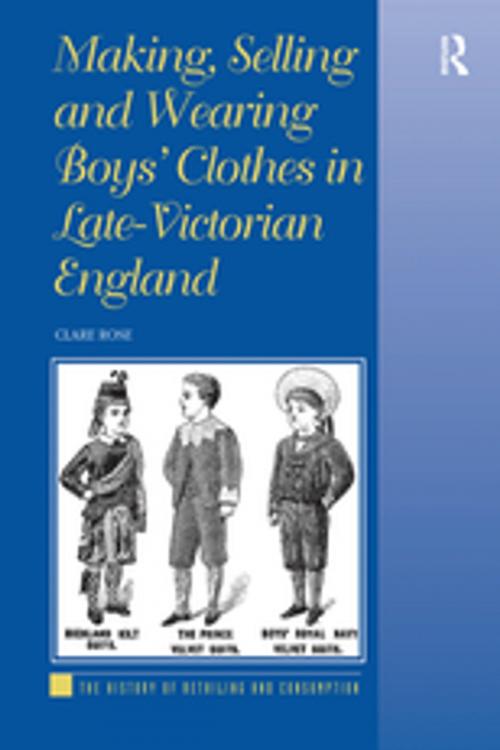| Author: | Clare Rose | ISBN: | 9781351920599 |
| Publisher: | Taylor and Francis | Publication: | December 5, 2016 |
| Imprint: | Routledge | Language: | English |
| Author: | Clare Rose |
| ISBN: | 9781351920599 |
| Publisher: | Taylor and Francis |
| Publication: | December 5, 2016 |
| Imprint: | Routledge |
| Language: | English |
There has been a great deal of recent interest in masculine clothing, examining both its production and consumption, and the ways in which it was used to create individual identities and to build businesses, from 1850 onwards. Drawing upon a wide range of sources this book studies the interaction between producers and consumers at a key period in the development of the ready-made clothing industry. It also shows that many innovations in advertising clothing, usually considered to have been developed in America, had earlier British precedents. To counter the lack of documentary evidence that has hitherto hampered research into the dress practices of non-elite groups, this book utilises thousands of unpublished visual documents. These include hundreds of manufacturers' designs, which underline an unexpected degree of investment by manufacturers in boys' clothing, and which was matched by heavy investment in advertising, with thousands of images of boys' clothing for shop catalogues in the Stationers' Hall copyright archive. Another key source is the archives of Dr Barnardo's Homes. This extraordinary collection contains over 15,000 documented photographs of boys entering between 1875 and 1900, allowing us to look beyond official polarization of 'raggedness' and 'respectability' used by charities and social reformers of all stripes and to establish the clothing that was actually worn by a large sample of boys. A close analysis of 1,800 images reveals that even when families were impoverished, they strove to present their boys in ways that reflected their position in the family group and in society. By drawing on these visual sources, and linking the design and retailing of boys' clothing with social, cultural and economic issues, this book shows that an understanding of the production and consumption of the boys clothing is central to debates on the growth of the consumer society, the development of mass-market fashion, and concepts of childhood and masculinity.
There has been a great deal of recent interest in masculine clothing, examining both its production and consumption, and the ways in which it was used to create individual identities and to build businesses, from 1850 onwards. Drawing upon a wide range of sources this book studies the interaction between producers and consumers at a key period in the development of the ready-made clothing industry. It also shows that many innovations in advertising clothing, usually considered to have been developed in America, had earlier British precedents. To counter the lack of documentary evidence that has hitherto hampered research into the dress practices of non-elite groups, this book utilises thousands of unpublished visual documents. These include hundreds of manufacturers' designs, which underline an unexpected degree of investment by manufacturers in boys' clothing, and which was matched by heavy investment in advertising, with thousands of images of boys' clothing for shop catalogues in the Stationers' Hall copyright archive. Another key source is the archives of Dr Barnardo's Homes. This extraordinary collection contains over 15,000 documented photographs of boys entering between 1875 and 1900, allowing us to look beyond official polarization of 'raggedness' and 'respectability' used by charities and social reformers of all stripes and to establish the clothing that was actually worn by a large sample of boys. A close analysis of 1,800 images reveals that even when families were impoverished, they strove to present their boys in ways that reflected their position in the family group and in society. By drawing on these visual sources, and linking the design and retailing of boys' clothing with social, cultural and economic issues, this book shows that an understanding of the production and consumption of the boys clothing is central to debates on the growth of the consumer society, the development of mass-market fashion, and concepts of childhood and masculinity.















